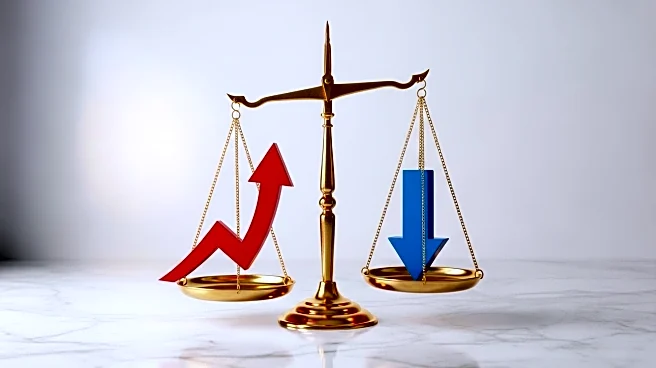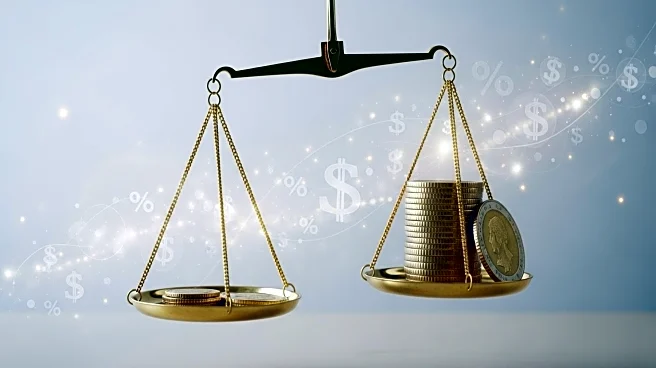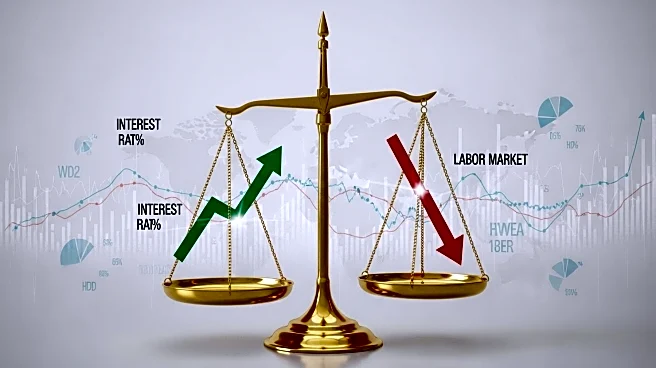What is the story about?
What's Happening?
The Federal Reserve is preparing to cut interest rates for the first time in a year, potentially by as much as 50 basis points. This policy shift is expected to reduce the yields on risk-free cash-equivalent investments, prompting concerns about the movement of a significant amount of cash currently parked in money market funds. According to Crane Data, these funds hold a record $7.6 trillion. The 'wall of cash' theory suggests that this movement could create a stock market rally, although this theory has been both supported and debunked in the past. The decision to cut rates is influenced by recent jobs market data indicating a weakening labor market and inflation data that, while not fully alleviating pricing pressures, suggest the need for a rate cut.
Why It's Important?
The Federal Reserve's decision to cut interest rates is significant for investors and the broader economy. Lower rates typically lead to reduced yields on cash-equivalent investments, prompting investors to seek higher returns in riskier assets, potentially fueling stock market activity. This shift could impact financial markets, influencing investment strategies and economic growth. Additionally, the rate cut aims to address concerns about rising unemployment and persistent inflation, highlighting the Fed's balancing act between stimulating economic growth and controlling inflation. The outcome of this policy change will be closely watched by investors, businesses, and policymakers.
What's Next?
As the Federal Reserve moves forward with its rate cut, investors and financial markets will be closely monitoring the impact on money market funds and the potential shift of cash into other investment vehicles. The central bank's actions will also be scrutinized for their effects on the labor market and inflation. Stakeholders, including businesses and policymakers, will need to adapt to the changing economic landscape, potentially adjusting strategies to navigate the evolving interest rate environment. The Fed's future decisions will likely continue to influence market dynamics and economic conditions.
AI Generated Content
Do you find this article useful?














